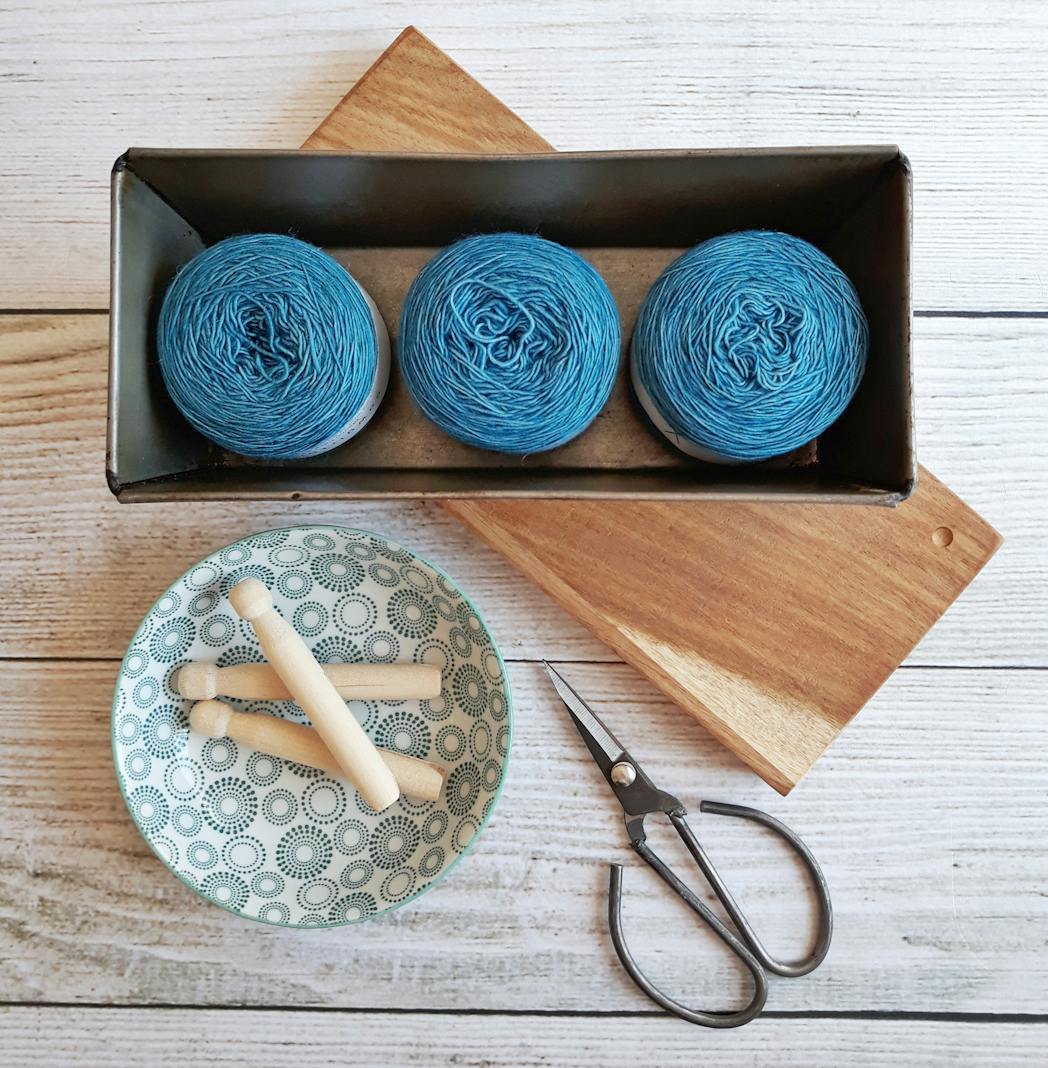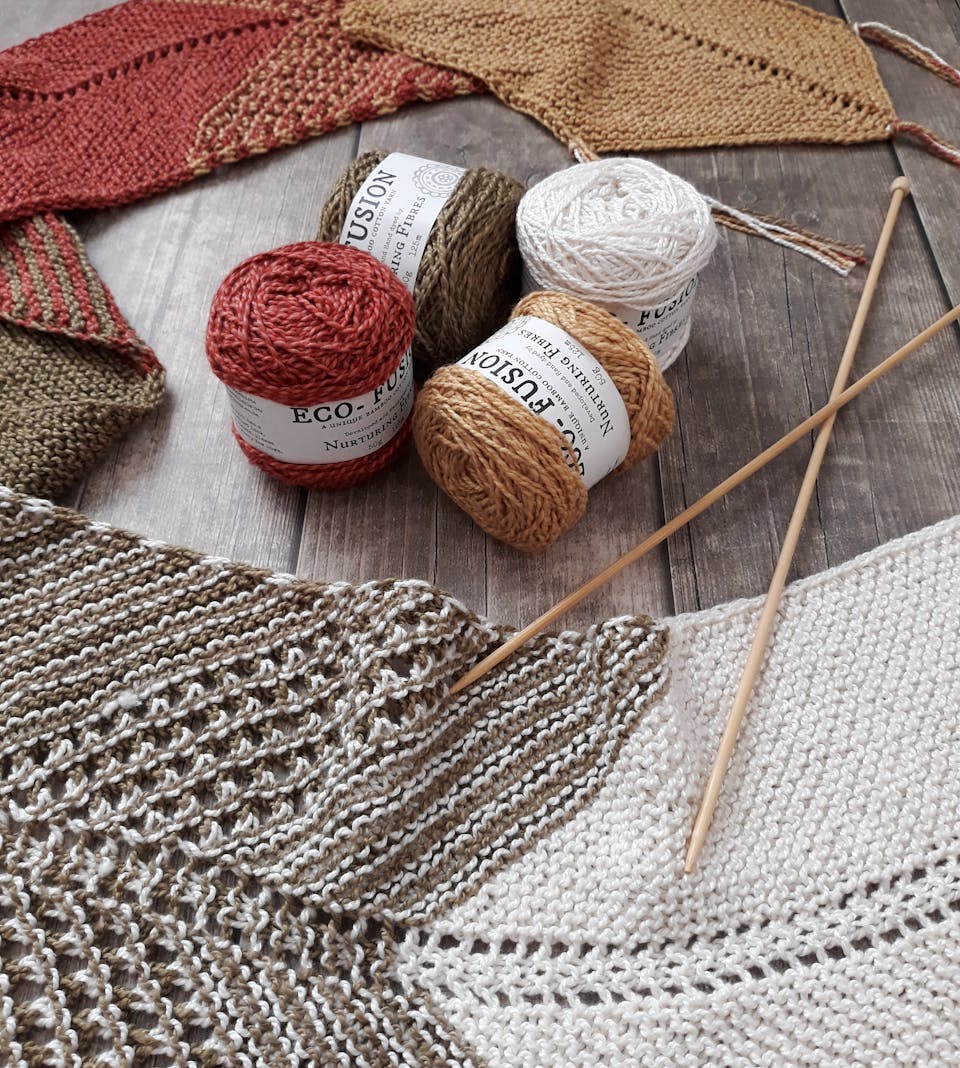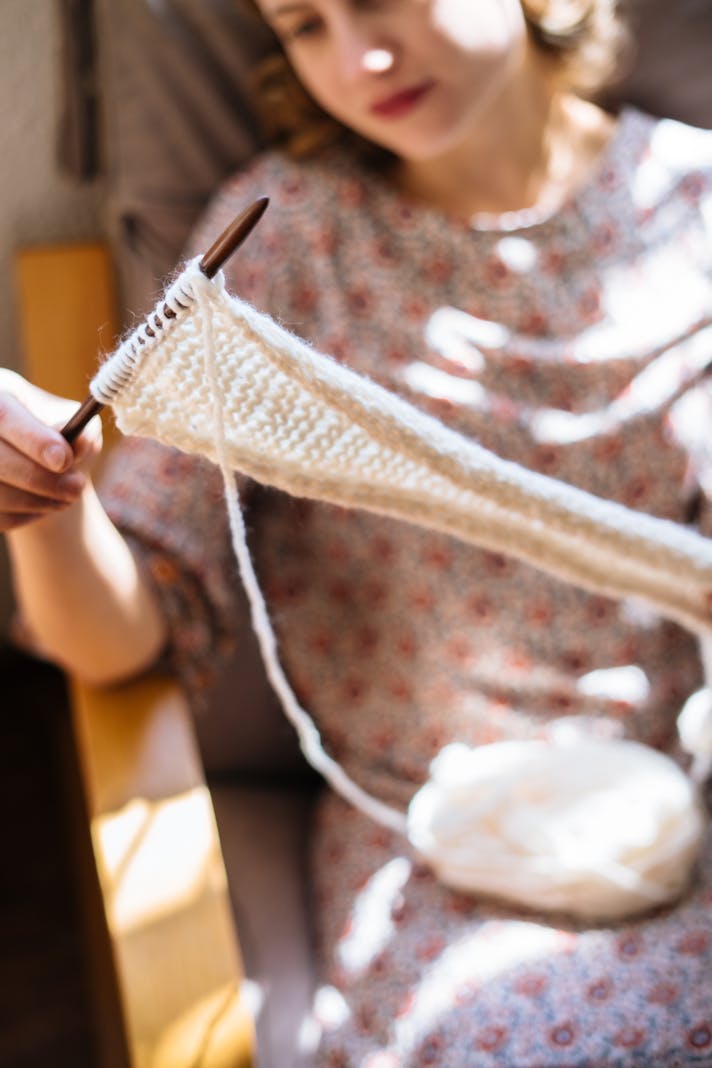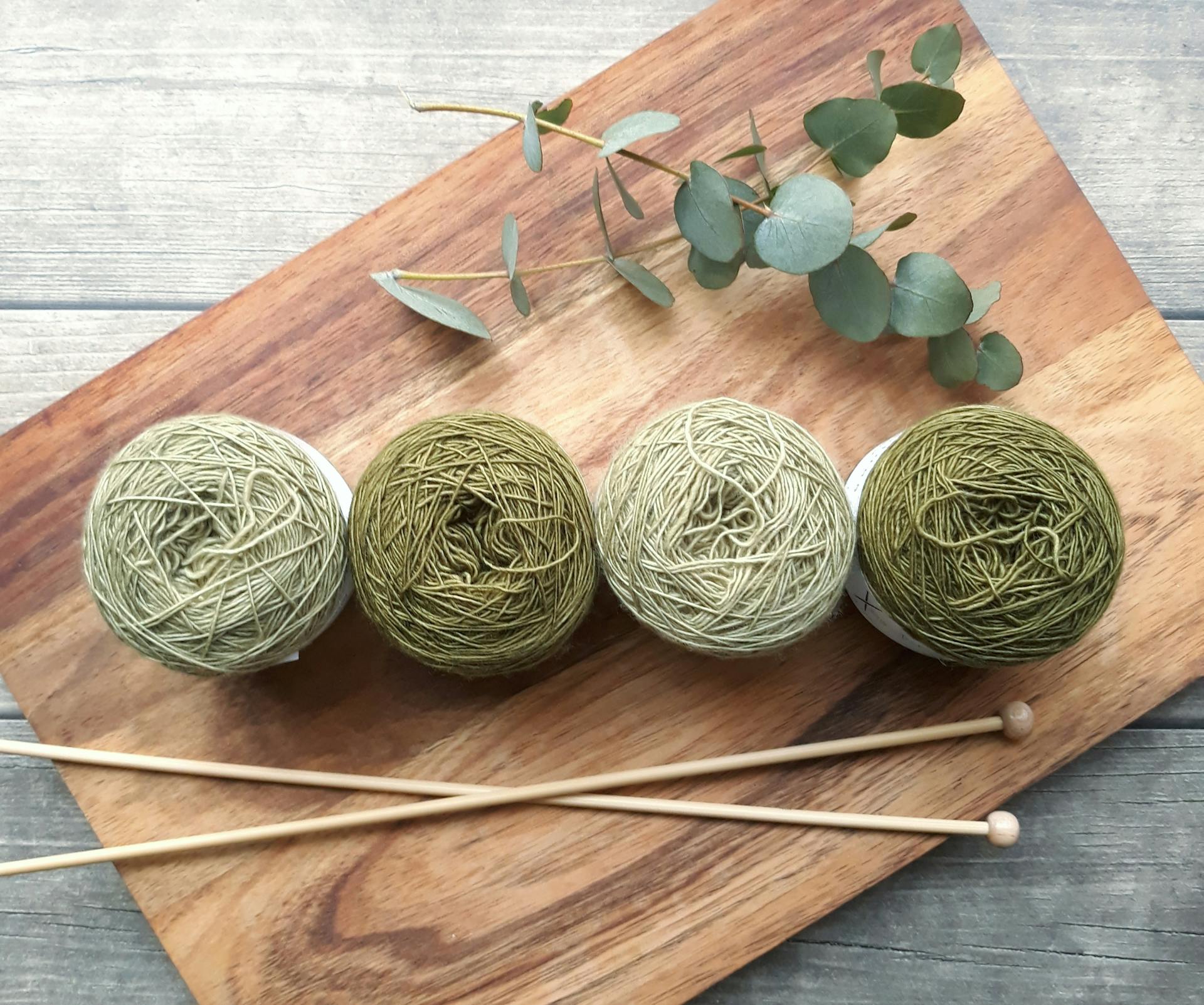Using Up Leftover Yarn

Leftover yarn can be considered the ‘collateral damage’ of knitting. The skeins pile up and glare as you survey your stash. What to do with them? Sure, they can be donated, or used as scrap yarn, but sometimes there’s almost enough for a second project, if you can develop one. Every so often, it’s a good idea to go through your stash, organize your leftovers, and invent a reason to use them up.
If your stash is organized by yarn weight, so much the better – this makes it easier to consider combining different odd skeins together. People tend to develop relationships with certain fibers and yarn companies, which makes it even easier to collage a project. It help to make space on the floor or on a table and physically move the skeins around. Visually understanding what different skeins look like together will help your mind to start imagining how they might look knitted up as a hat, a pair of mitts, or a scarf.
Designer Ann Budd has written a wealth of resources useful to the leftovers kntter. The Knitter's Handy Book of Patterns is a wonderful set of patterns that can be customized by yarn weight, and if used together with her leaflet The Knitter's Handy Guide to Yarn Requirements, it gives the stash knitter all the information needed to use up extra skeins. The Knitter's Handy Book of Sweater Patterns and The Knitter's Handy Book of Top-Down Sweaters will enable you to construct entire garments customized to your own gauge and your own stash!
Don't want to find these books? An internet search will procure one of many knitting calculators that can help you estimate how much yarn is needed for a project. The good folks at the online store Jimmy Beans Wool offer a particularly detailed version that allows you to customize by yarn weight, project type, and finished size, but it’s not the only one out there. Keep in mind that you will need extra yarn if you want to use a stitch pattern beyond stockinette.
If you want to go beyond stockinette, check your stitch dictionaries. Lace and eyelet patterns are great for extending yarn amounts, so start here if you’re worried about having enough yarn. Knit-purl combination patterns often look good on both sides of the fabric, making these great choices for scarves. Hats use such small amounts of yarn that this might be a good place to try a small cable pattern; as some cable patterns use an astonishing amount of yarn beyond the stockinette measurement, this is a good choice if you have a skein beyond what you think you’ll need.
If you’re interested in trying stranded knitting, you’ll need the calculated amount for the main color and additional amounts for the stranded layers. This is a great way to use up extra sock yarn; if you find many odds and ends here, consider buying a skein of neutral yarn that will serve as a background for your bright odds and ends. The stranded section can provide a border or focal point if you’re worried about running out of particular colors; if you have tons of mixable odds and ends, you can go wild with a fully patterned piece.
Always, always, always create a gauge swatch when you are creating a garment from leftovers. Since you are working with limited yarn, it’s important to make sure that your gauge matches that used for your yarn estimate. If you’ve knit with this fiber before and know how it washes and dries, you will be able to make the swatch, measure it on the needle, and then rip it out to be able to use every precious yard.
Shopping for new yarn is always wonderful, but the thrifty pleasure of using up odds and ends has a charm of its own. As you knit, feel your connection to the ‘make do and mend’ ancestors in your past as well as to the upcycling movement of the present. You are a knitter – you make magic with items that others might toss. Be proud of this ability!
Disclaimer: I am not affiliated with Ann Budd or Jimmy Beans Wool. I have paid for my books with my own funds.
If your stash is organized by yarn weight, so much the better – this makes it easier to consider combining different odd skeins together. People tend to develop relationships with certain fibers and yarn companies, which makes it even easier to collage a project. It help to make space on the floor or on a table and physically move the skeins around. Visually understanding what different skeins look like together will help your mind to start imagining how they might look knitted up as a hat, a pair of mitts, or a scarf.
Designer Ann Budd has written a wealth of resources useful to the leftovers kntter. The Knitter's Handy Book of Patterns is a wonderful set of patterns that can be customized by yarn weight, and if used together with her leaflet The Knitter's Handy Guide to Yarn Requirements, it gives the stash knitter all the information needed to use up extra skeins. The Knitter's Handy Book of Sweater Patterns and The Knitter's Handy Book of Top-Down Sweaters will enable you to construct entire garments customized to your own gauge and your own stash!
Don't want to find these books? An internet search will procure one of many knitting calculators that can help you estimate how much yarn is needed for a project. The good folks at the online store Jimmy Beans Wool offer a particularly detailed version that allows you to customize by yarn weight, project type, and finished size, but it’s not the only one out there. Keep in mind that you will need extra yarn if you want to use a stitch pattern beyond stockinette.
If you want to go beyond stockinette, check your stitch dictionaries. Lace and eyelet patterns are great for extending yarn amounts, so start here if you’re worried about having enough yarn. Knit-purl combination patterns often look good on both sides of the fabric, making these great choices for scarves. Hats use such small amounts of yarn that this might be a good place to try a small cable pattern; as some cable patterns use an astonishing amount of yarn beyond the stockinette measurement, this is a good choice if you have a skein beyond what you think you’ll need.
If you’re interested in trying stranded knitting, you’ll need the calculated amount for the main color and additional amounts for the stranded layers. This is a great way to use up extra sock yarn; if you find many odds and ends here, consider buying a skein of neutral yarn that will serve as a background for your bright odds and ends. The stranded section can provide a border or focal point if you’re worried about running out of particular colors; if you have tons of mixable odds and ends, you can go wild with a fully patterned piece.
Always, always, always create a gauge swatch when you are creating a garment from leftovers. Since you are working with limited yarn, it’s important to make sure that your gauge matches that used for your yarn estimate. If you’ve knit with this fiber before and know how it washes and dries, you will be able to make the swatch, measure it on the needle, and then rip it out to be able to use every precious yard.
Shopping for new yarn is always wonderful, but the thrifty pleasure of using up odds and ends has a charm of its own. As you knit, feel your connection to the ‘make do and mend’ ancestors in your past as well as to the upcycling movement of the present. You are a knitter – you make magic with items that others might toss. Be proud of this ability!
Disclaimer: I am not affiliated with Ann Budd or Jimmy Beans Wool. I have paid for my books with my own funds.

Related Articles
Editor's Picks Articles
Top Ten Articles
Previous Features
Site Map
Content copyright © 2023 by Korie Beth Brown, Ph.D.. All rights reserved.
This content was written by Korie Beth Brown, Ph.D.. If you wish to use this content in any manner, you need written permission. Contact Korie Beth Brown, Ph.D. for details.







